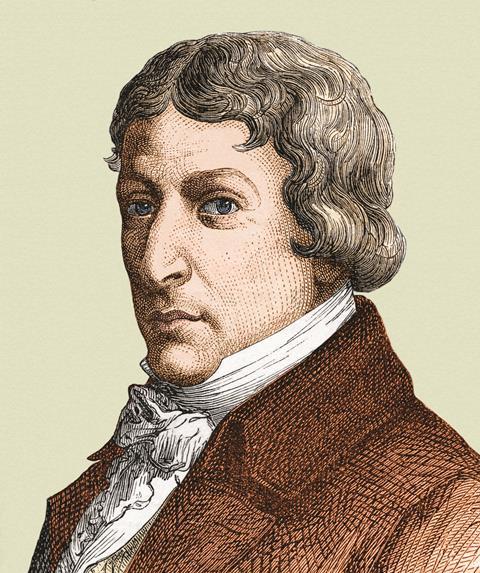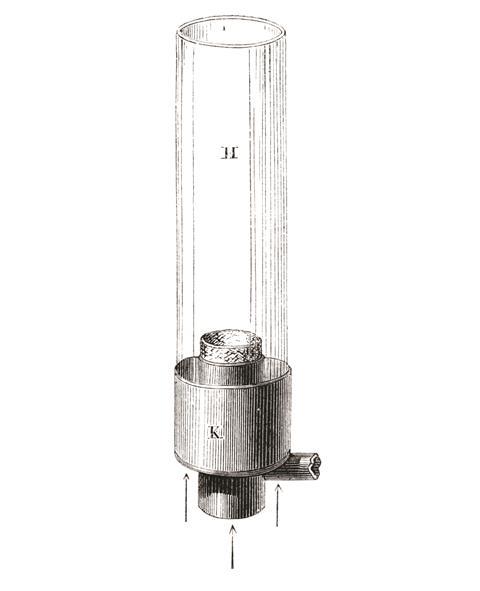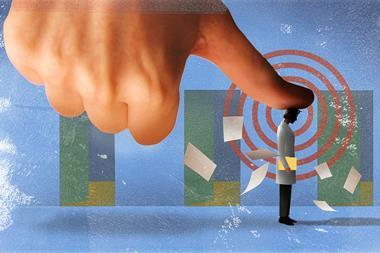The innovation that gave light to the world
François-Pierre-Amédée Argand
Genevan chemist (1750–1803). Inventor of modern streetlighting
I once plunged a lecture theatre into darkness. Pandemonium ensued. There were shouts, chatter, whistles, laughter, hoots – even some missiles – in truly inky blackness. It was a striking demonstration of how unusual it is for us to be truly in the dark, and how unsettling that darkness can be.
The fear of the dark goes back a long way and with good reason. Most cities were once no go zones after sunset – anyone foolish enough to walk ran the risk of robbery, violence or worse. The problem was so bad that in October 1524 the French parliament issued an edict requiring each household to maintain a candle or lantern to cast light into the street. This was followed by another order requiring a man to be stationed with a lamp or light at the corner of each road. By 1664, Louis XIV issued letters patent approving a corps of porte-flambeaux or porte-lanternes – torch or lantern bearers – who, for a fee, would escort and protect those needing to travel in the hours of darkness. The success of this service led to fixed lanterns in Paris, maintained by a team of éclaireurs publiques who would light the tallow candles in the evening. Travellers from abroad marvelled at the glass boxes suspended above the road.
But tallow candles were dim. In 1763, Paris’ lieutenant general of police, Antoine Sartine, held a competition for innovations in lighting. Among those who submitted proposals was Antoine Lavoisier, who was studying combustion. Lavoisier’s design was judged too scientific to be of much practical use; he was awarded a medal, while the large prize was split between three inventors who suggested placing mirrors inside the lanterns. But Lavoisier’s studies of combustion pointed the way: the problem with candles was simply lack of oxygen. It would be one of Lavoisier’s students who would solve the problem.

François-Pierre-Amédée Argand, known to everyone as Aimé, was born in Geneva, Switzerland and trained at its Academy. There, he began to attend lectures by the young Horace-Benedict de Saussure whose recent book, Voyage dans les Alpes, had become a bestseller. When Argand graduated, de Saussure recommended him to Lavoisier and the chemist François Fourcroy in Paris, where he moved in 1775. Under their tutelage, he started giving lectures on distillation that not only drew attention to limitations in current methods, but also proposed a number of improvements. Among his students were several winemakers from the Vaucluse in Provence. They invited him to Montpellier to try out his ideas, promising him a share of the profits.
François-Pierre-Amédée Argand, known to everyone as Aimé, was born in Geneva, Switzerland and trained at its Academy. There, he began to attend lectures by the young Horace-Benedict de Saussure (Chemistry World, October 2010, p68) whose recent book, Voyage dans les Alpes, had become a bestseller. When Argand graduated, de Saussure recommended him to Lavoisier and the chemist François Fourcroy in Paris, where he moved in 1775. Under their tutelage, he started giving lectures on distillation that not only drew attention to limitations in current methods, but also proposed a number of improvements. Among his students were several winemakers from the Vaucluse in Provence. They invited him to Montpellier to try out his ideas, promising him a share of the profits.
Argand set out in March 1780 and spent the next couple of years working with his brother, Jean, in the village of Calvisson perfecting an improved still. A key part of the design was the heating system. It may be that Argand had seen a short paper by an army officer called Meunier, who proposed improvements for oil-burners. Meunier suggested that if one used a flat wick the increased surface area would lead to a hotter flame. By adding a metal chimney around several such wicks, convection would drive more air through the system further increasing the temperature.
Argand developed this idea. His wick would consist of a flat ribbon, shaped like a cylinder sitting in a reservoir of oil, with two concentric metal tubes inside and outside. Once lit, air was drawn up by convection on both sides the wick resulting in a truly brilliant, smokeless flame. With a hard glass tube on the outside, the lamp was as bright as eight or ten candles. It was also far safer, because the flame was enclosed. It was the brightest lamp in 2000 years of lighting.
The Argand brothers sold the rights to their still design and moved on, with Ami heading towards Paris to commercialise his new lamp. Travelling north, he met the Montgolfier brothers, who had just conducted the first successful balloon flight. Quickly becoming friends, they travelled to Paris together to seek their fortunes.
The aeronautical Montgolfier brothers were a sensation, and Argand’s association with them opened many doors. He showed his prototype lamp to Sartine’s successor, Jean-Charles-Pierre Lenoir, who was hugely impressed. But when Argand, fearful of not receiving a reward for his work, refused to reveal the design, an argument ensued. At the same time, a pharmacist, Antoine Quinquet, began to badger Argand about the workings of the lamp.
Argand clammed up. Frustrated with French bureaucracy, afraid of being scooped and wanting the best workshop to produce his lamps, he moved to England where intellectual property was better respected. He obtained a British patent in 1783 and met Matthew Bolton and James Watt.

But a few hints from Argand had been enough for Quinquet to design a lamp on the same principle. Quinquet altered the design of the glass chimney, bulging it at the bottom and narrowing it at the top. The ‘Quinquet lamp’ were hugely popular, so Argand hurried back to Paris and sued. He won twice. But Quinquet and his associate Lange had the advantage. Eventually, an agreement was reach to share the rights, with Quinquet and Lange making lamps in Paris while Argand set up a workshop in Versoix, outside Geneva. But the French revolution of 1789 swept everything away. Lavoisier was executed, intellectual property became a free-for-all and copycats flourished. Argand became increasingly eccentric, and was rumoured to wander in cemeteries collecting bones for weird experiments. He died, broken, at age 53.
Yet for chemists, his burner was a hot item. With a pair of copper chimneys it was perfect for laboratory work and was adopted by Jöns Jacob Berzelius, with whose name the laboratory version came to be associated. It remained the standard laboratory burner until the arrival of the Bunsen burner.
Yet for chemists, his burner was a hot item. With a pair of copper chimneys it was perfect for laboratory work and was adopted by Jöns Jacob Berzelius, with whose name the laboratory version came to be associated. It remained the standard laboratory burner until the arrival of the Bunsen burner (Classic Kit, October 2007, p77).
Today we’re blasé about light. Glowing gases, phosphors and LEDs are available at the flip of a switch. Ironically, far from fearing the darkness, many now pine for a view of the stars – those sparks in the sky almost obliterated by the descendants of Argand’s invention.












No comments yet